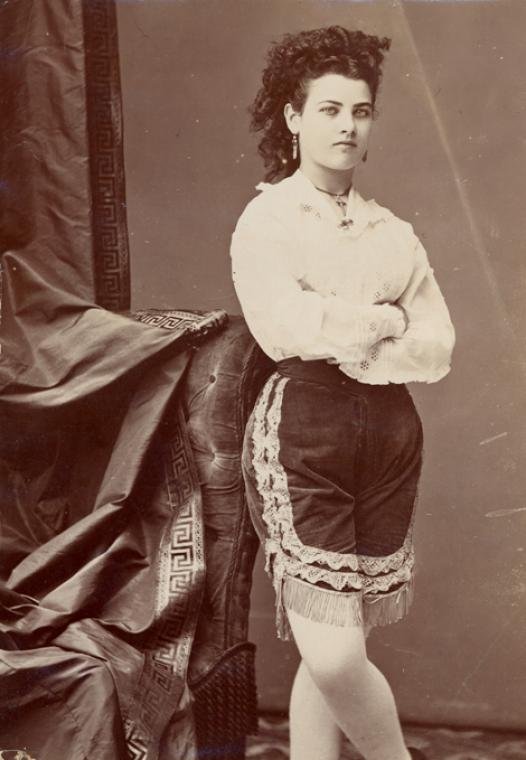Weird Niagara: The Tawdry Tales of Canal Side and Kitty O’Neil
When most people picture Niagara, they see crashing water and shimmering rainbows. But hidden in Niagara — and in nearby Buffalo’s past — lies another story: not of natural wonder, but of sin, survival, and scandal. Canal Street, later known as Dante Place, “the Hooks,” and most infamously the Infected District, was once among the wildest red-light neighborhoods in America.
The Infected District
By the 1890s, Canal Street In Buffalo was drowning in whiskey and vice. Missionaries mapped out its sin: 75 houses of prostitution, 108 saloons, and 19 free-theater saloons crammed into a few blocks. A Salvation Army officer, who had walked slums in every major city on Earth, said only one street in Bombay was worse. The respectable whispered of it in shock; the curious wandered down to see for themselves.
Here, sailors arriving with full pay pockets rarely left with a cent. Burlesque dancers beckoned, card games clattered, knives flashed in alleyways, and the drunk tanks filled with women just as often as men. Poverty and vice clung together in the same tenement walls. Entire immigrant families, mostly Italians, lived in rooms less than ten feet wide, sharing filthy water closets that “were too filthy for use.” Cholera thrived where children played in gutters running with waste.
By the early 20th century, Buffalo’s leaders tried to wash away Canal Street’s filthy reputation with a new name: Dante Place. It was meant as a nod to the city’s growing Italian community and the cultural prestige of Dante Alighieri. Yet the irony was almost too perfect. The neighborhood already had a reputation as Buffalo’s own underworld of vice, and now it bore the name of the poet who wrote the Inferno. In a way, the rebranding only sharpened the legend — Buffalo’s waterfront hell was officially christened after the man who mapped out the circles of Hell itself.
Kitty Oneil.
Kitty O’Neil: From Stage to Canal Street
Among the district’s tawdry legends, none glimmered brighter — or dimmer — than Kitty O’Neil.
Born in Buffalo in 1855 to Irish immigrant parents, Catherine “Kitty” O’Neil rose to become one of America’s most celebrated variety dancers. Trained from childhood, she dazzled audiences from Boston to New York. At Tony Pastor’s Bowery Opera House, she was billed as “the only female jig dancer extant, all others mere imitators.” She was famous for the sand jig — a dazzling, sliding shuffle danced on a sand-strewn stage.
Kitty toured for decades, performing at New York’s Theatre Comique, the Howard Athenaeum in Boston, and Brooklyn’s Hyde and Behman’s Theater. The New York Times hailed her as “the best female jig dancer in the world.” Her reputation even inspired a famous tune, “Kitty O’Neil’s Champion Jig,” still played by Irish musicians today.
But fame is fleeting. By the 1890s, Kitty had returned to Buffalo. Hard times and scandalous whispers followed. Sailors swore they saw her dancing nude on Canal Street, reduced from the heights of Broadway to survival in Buffalo’s Infected District. Whether fact or exaggeration, the story stuck — a symbol of how even stars could sink in the whirlpool of Canal Street’s temptations.
Liberty and Sin Side by Side
In 1837, Buffalo found itself swept into the drama of the Upper Canada Rebellion, when Canadian reformers led by William Lyon Mackenzie tried to overthrow British rule just across the river. Buffalonians threw in their lot with the rebels, even supplying the steamer Caroline to ferry men and provisions to Mackenzie’s island stronghold on Navy Island. British troops struck back, seizing the ship, setting it ablaze, and sending it over Niagara Falls — killing an American crewman in the process. The incident nearly triggered war between the United States and Britain. In its wake, Buffalonians raised a towering Liberty Pole at Main and Terrace, crowned with a golden eagle glaring north toward Toronto. It became the city’s proudest patriotic monument — and, with irony befitting Buffalo’s history, it stood just blocks away from the city’s most notorious brothels and gin mills in the Infected District.
Erasure and Memory
By 1939, Buffalo decided to wipe the slate clean. The Memorial Auditorium rose where Dante Place once stood, burying the brothels and tenements beneath modern concrete. The “Aud” became home to the Sabres and Braves, then was itself torn down in 2009. Today, families skate, curl, and pose with Shark Girl at Canalside, never guessing the streets once roared with drunken sailors and the shuffle of Kitty O’Neil’s dance.
Weird Niagara
The Falls are timeless, but Buffalo’s Canal Street was anything but. It was a place where immigrants built lives in filth and fire, where women fought and danced to survive, and where vice was as common as bread. Kitty O’Neil’s story — from world-famous dancer to whispered burlesque in the Hooks — captures the heart of it.
When you walk Canalside today, listen past the music and laughter. Somewhere under your feet, under the glassy waters and bright Adirondack chairs, lingers the echo of fiddles, dice, and Kitty O’Neil’s final steps.
✨ Join Go Niagara Tours and explore the shadows beneath the mist. Discover the strange, scandalous, and unforgettable stories of Niagara’s wicked past.
#WeirdNiagara #BuffaloHistory #NiagaraFallsStories #CanalStreet #DantePlace #InfectedDistrict #WickedNiagara #NiagaraLore #BuffaloPast #ImmigrantHistory #IrishHistory #ItalianHistory #BurlesqueHistory #KittyONeil #BuffaloCanalside #HauntedNiagara #DarkHistory #ViceAndSurvival #BuffaloUnderground #NiagaraSecrets #AmericanHistory #ErieCanal #NiagaraMysteries
Central War at Canalside in the mid to late 1800s.



